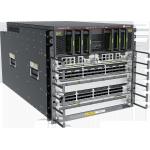Item | MA5600T (ETSI) | MA5600T (IEC) | MA5603T | MA5608T |
|---|
| Appearance | See product photo |
| Supported cabinet | Indoor cabinet: N63E-22, N66E-18
Outdoor cabinet: F01T500, F01D2000 | Indoor cabinet: N66E-22
Outdoor cabinet: none | Indoor cabinet: N66E-18
Outdoor cabinet: F01T500, F01S300, F01T300 | Indoor cabinet: N63E-22
Outdoor cabinet: F01S100, F01S200 |
| Board configuration | 2 slots for control boards
16 slots for service boards
1 slot for the universal interface board
2 slots for upstream interface boards
2 slots for power interface boards. | 2 slots for control boards
14 slots for service boards
1 slot for the universal interface board
2 slots for upstream interface boards
2 slots for power interface boards. | 2 slots for control boards
6 slots for service boards
1 slot for the universal interface board
2 slots for upstream interface boards
2 slots for power interface boards. | 2 slots for control boards
2 slots for service boards
1 or 2 slots for the power interface board. |
| Supported control board and its switching capacity | SCUB: 48 Gbit/s
SCUF: 128 Gbit/s
SCUN/SCUK: 480 Gbit/s in active/standby mode or 960 Gbit/s in
load-sharing mode
SCUH/SCUV: 960 Gbit/s in active/standby mode or 1920 Gbit/s in
load-sharing mode | MCUD/MCUD1/MCUE: 128 Gbit/s in active/standby mode or 256 Gbit/s in
load-sharing mode |
| System Layer 2 packet forwarding rate | SCUB: 72 Mpps
SCUF: 190 Mpps
SCUN/SCUK: 726 Mpps in active/standby mode or 1452 Mpps in
load-sharing mode
SCUH/SCUV: 1428 Mpps in active/standby mode or 2856 Mpps in
load-sharing mode | MCUD/MCUD1/MCUE: 190 Mpps in active/standby mode or 380 Mpps in
load-sharing mode |
| Switching/Forwarding delay | Short forwarding delay: The 100 Mbit/s Ethernet port sends the
64-byte Ethernet packets at a delay shorter than 20 μs. |
| BER in full load | BER of a port when the port transmits data in full load < 10 e-7 |
| System reliability specifications | System: redundant configuration.
System availability for the typical configuration: > 99.999%
Mean time between failures (MTBF): about 45 years. NOTE:Due to different network environments and different boards used by
devices, the preceding MTBF (45 years) of the
MA5600T/MA5603T/MA5608T is only for reference. The average repair
time for field replaceable units (FRUs) is about 2 hours. The
preceding values are only for reference. For details, contact the
related Huawei engineers. |
| Maximum number of ADSL2+ ports in a subrack | 1024 | 896 | 384 | 128 |
| Maximum number of VDSL2 ports in a subrack | 1024 | 896 | 384 | 128 |
| Maximum number of Vectoring ports in a subrack | 768 | 768 | 384 | N/A |
| Maximum number of SuperVector ports in a subrack | N/A | N/A | 384 | N/A |
| Maximum number of EFM SHDSL ports in a subrack | 512 | 448 | 192 | 64 |
| Maximum number of TDM SHDSL ports in a subrack | 256 | 224 | 96 | 32 |
| Maximum number of POTS ports in a subrack | 1024 | 896 | 384 | 128 |
| Maximum number of ISDN BRA ports in a subrack | 512 | 448 | 192 | 64 |
| Maximum number of ISDN PRA ports in a subrack | 64 | 64 | 64 | 64 |
| Maximum number of GPON ports in a subrack | 256 | 224 | 96 | 32 |
| Maximum number of 10G GPON ports in a subrack | 128 | 112 | 48 | 16 |
| Maximum number of P2P FE ports in a subrack | 768 | 672 | 288 | 96 |
| Maximum number of P2P GE ports in a subrack | 768 | 672 | 288 | 96 |
| Maximum number of upstream ports (GE ports in the GIU slot) in a
subrack | 8 | 8 | 8 | N/A |
| Maximum number of upstream ports (10GE ports in the GIU slot) in a
subrack | 4 | 4 | 4 | N/A |
| Maximum number of upstream ports (PON ports in the GIU slot) in a
subrack | 1 | 1 | 1 | N/A |
| Maximum number of upstream ports (ports on the control board) in a
subrack | SCUB/SCUF: 4 x GE (in the active/standby mode)
SCUN/SCUK: 8 x GE (in the load-sharing mode)
SCUH/SCUV: 8 x 10GE/GE (in the load-sharing mode) | MCUD/MCUE: 8 x GE (in the load-sharing mode)
MCUD1: 4 x GE + 4 x 10GE/GE (in the load-sharing mode) |
| Maximum number of extended subracks connected to a master subrack | 32 | 32 | 32 | N/A |
| Maximum number of ONUs supported by each subrack | - For Layer 2 applications, the maximum number of ONUs supported by
each subrack is determined based on the number of MAC addresses and
service flows supported by the control board, as well as the number
of MAC addresses and service flows planned for the ONUs.
- For Layer 3 applications, the maximum number of ONUs supported by
each subrack is determined based on the number of routes and ARP
entries supported by the control board.
|








